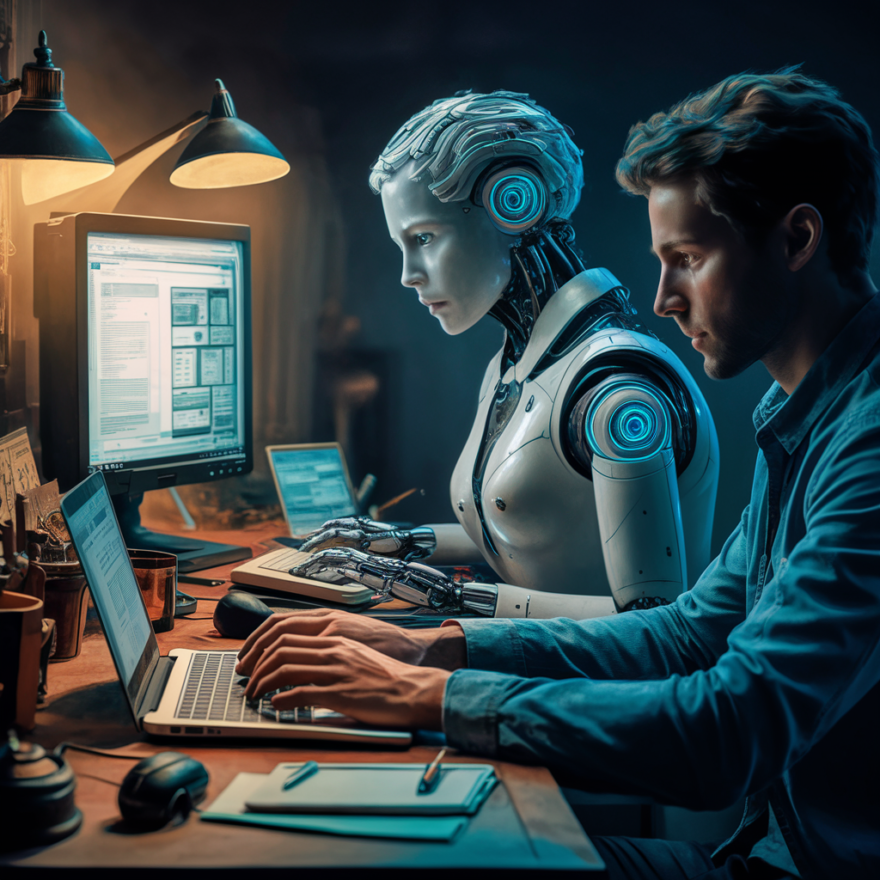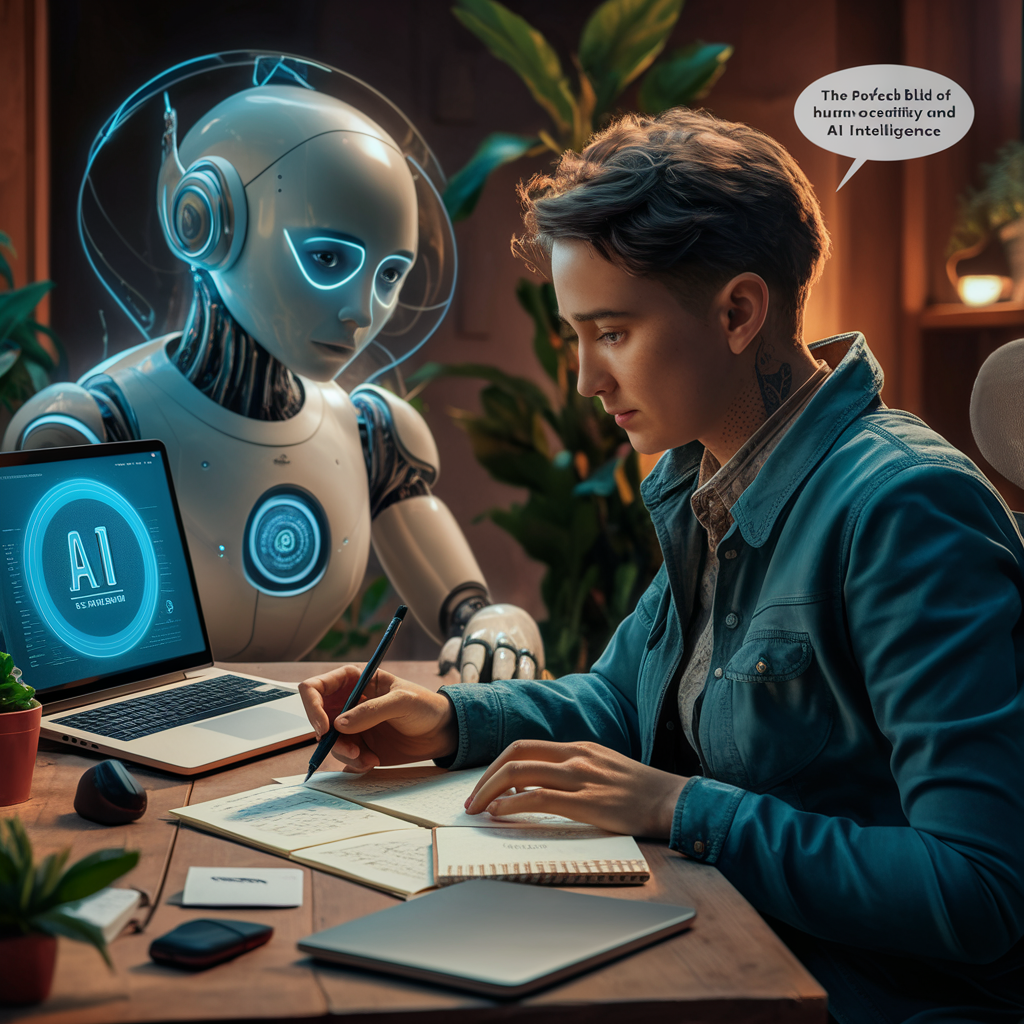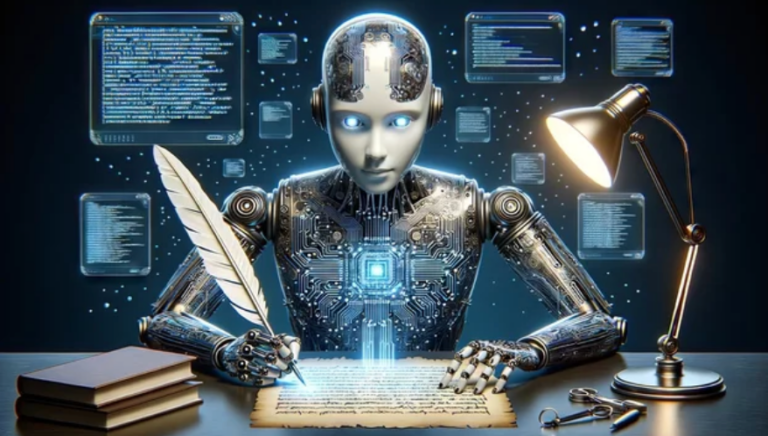With the rise of advanced AI writing tools, it’s crucial to understand how to differentiate between the two. This article will guide you through practical methods to identify artificially written content.
1. Utilizing AI Checkers

One of the most effective ways to identify AI-generated content is by using AI checkers. These tools are specifically designed to analyze text and determine its origin. By examining patterns, syntax, and word usage, the AI checker can give you a probability score indicating whether the content was created by a machine.
Tools like GPTZero and OpenAI’s AI content detector are widely used for this purpose. These tools work by comparing the text against known examples of AI-generated content, allowing them to detect subtle clues that may not be apparent to human readers.
2. Analyzing Writing Patterns
AI-generated content often follows certain patterns. Machines tend to produce text that is highly structured and consistent. Look for repetitive phrases or a lack of variation in sentence structure. Human writers usually have a more diverse style, incorporating different sentence lengths and structures to keep the reader engaged. Additionally, AI-generated content may exhibit a more formulaic approach, lacking the spontaneity and variability that characterize human writing. For instance, AI might overuse certain phrases or constructs that are commonly found in its training data.
3. Checking for Contextual Understanding

A key difference between human and AI writing is the ability to understand and convey context. AI can sometimes struggle with nuanced topics or complex ideas. If the content seems to lack depth or fails to address the subtleties of a topic, it might be AI-generated. Humans, on the other hand, tend to provide richer context and more detailed explanations. This is particularly evident in how human writers handle ambiguous or culturally specific references, which AI might misinterpret or oversimplify.
4. Assessing Creativity and Originality
Human writers often inject creativity and originality into their work. They use metaphors, analogies, and unique expressions to convey their ideas. AI, while capable of generating coherent text, often lacks this creative touch. If the content feels too generic or formulaic, it could be a sign that it was written by a machine. Human creativity also shows in the ability to generate novel ideas and perspectives, which AI might struggle with due to its reliance on pre-existing data. Look for elements like humor, irony, and cultural references that are typically more challenging for AI to generate convincingly.
5. Evaluating Emotional Tone
Humans naturally infuse their writing with emotion and personality. AI-generated content can sometimes feel flat or devoid of emotion. Pay attention to the tone of the text. If it seems too neutral or robotic, it might be a product of artificial intelligence. Human writers can convey a wide range of emotions through their word choice and sentence structure, creating a connection with the reader that AI often lacks. This is especially true in content that deals with personal experiences or subjective opinions, where the human touch is more apparent.
6. Spotting Inconsistencies
AI, despite its advancements, can still make mistakes that a human wouldn’t. Look for inconsistencies in the text, such as sudden changes in tone, style, or topic. These abrupt shifts can indicate that different AI models or algorithms were used, or that the AI struggled to maintain coherence. Inconsistencies might also arise from the AI’s attempt to blend multiple sources of information, leading to conflicting statements or logical gaps. Additionally, AI might produce content that seems disjointed or lacks a clear narrative flow, which can be a giveaway of its non-human origin.
7. Testing for Specific Knowledge
AI often relies on vast datasets to generate content but may lack specific, detailed knowledge about niche topics. Ask specific questions related to the subject matter. If the content fails to provide detailed or accurate answers, it could be a sign that it was generated by an AI. Human experts in a field can provide nuanced insights and detailed explanations that AI might miss. This is particularly useful in technical or specialized content, where the depth of understanding required can reveal the limitations of AI-generated text. Additionally, humans can cross-reference information and provide critical analysis, which AI might not be able to do effectively.
8. Examining the Introduction and Conclusion
Human writers typically craft engaging introductions and conclusions that tie the content together. AI-generated content may have introductions and conclusions that feel generic or disconnected from the main body. Analyze these sections to see if they provide a cohesive overview and summary of the topic. Human introductions often set the stage with a compelling hook or a relevant anecdote, while conclusions summarize key points and offer a final insight or call to action. AI, on the other hand, might produce introductions and conclusions that merely restate the topic or fail to add meaningful closure to the discussion.
9. Observing Detail and Specificity
Human writers usually include specific details and examples to support their arguments. AI-generated content might lack this level of detail and instead provide more general statements. Look for the presence of concrete examples, statistics, and anecdotes that illustrate the points being made. These details not only add credibility but also show the writer’s engagement with the topic. AI might struggle to incorporate such specifics naturally, leading to content that feels more superficial or vague.
10. Recognizing Human Touch in Humor and Cultural References
Humor and cultural references are areas where AI often falls short. Human writers use these elements to connect with their audience on a personal level. AI-generated content might attempt humor but often misses the mark or comes off as forced. Similarly, cultural references that require a deep understanding of societal norms and nuances can be challenging for AI to replicate authentically. Pay attention to how humor is used and whether cultural references feel genuine and relevant.
Conclusion

As AI technology continues to evolve, distinguishing between human and AI-generated content becomes more challenging. By utilizing AI checkers, analyzing writing patterns, and evaluating contextual understanding, you can develop a keen eye for identifying artificially written content. Remember, the key lies in the details—creativity, emotional tone, and consistency are hallmarks of human writing that machines often struggle to replicate.
Related Posts:
- 20 Best Gaming Headset Under 50$ 2024 - for PC, PS4,…
- Top 10 Best Scrubs For Women 2024 - Pants for Nurses…
- 15 Best Portable Blender While Traveling 2024 - Top…
- 15 Best Shoes for Walking on Concrete 2024 - Soft &…
- 10 Best Climbing Harness of all Time 2024 - Opinion…
- Top 10 Best Paint Sprayer For Cabinets 2024 -…







